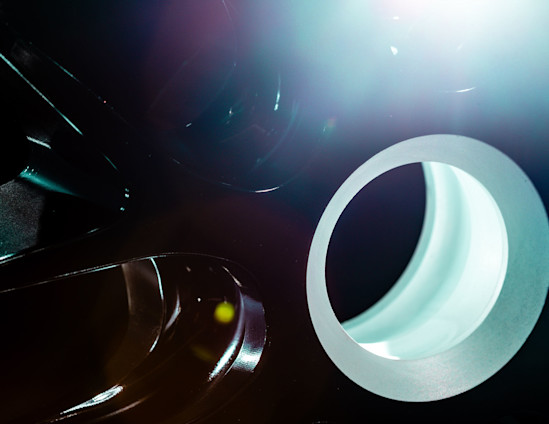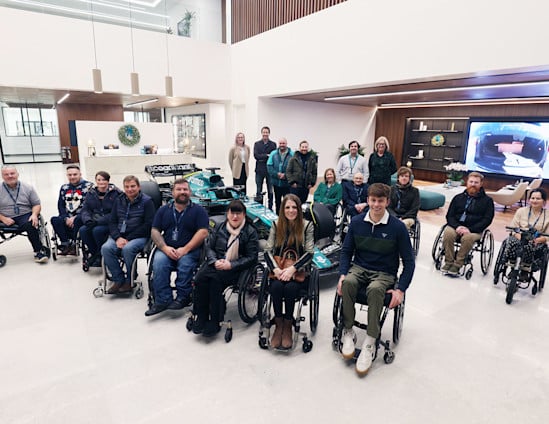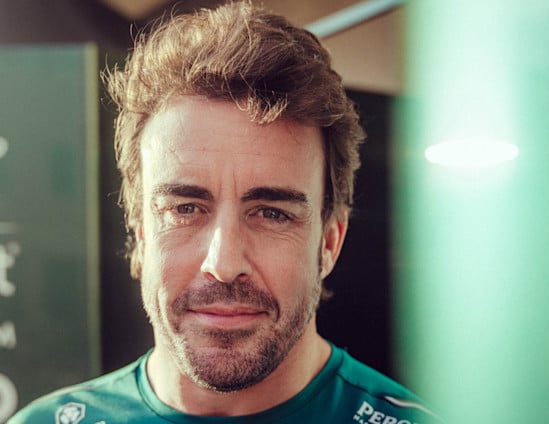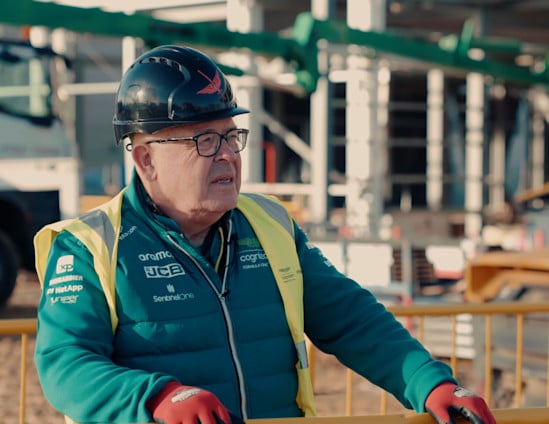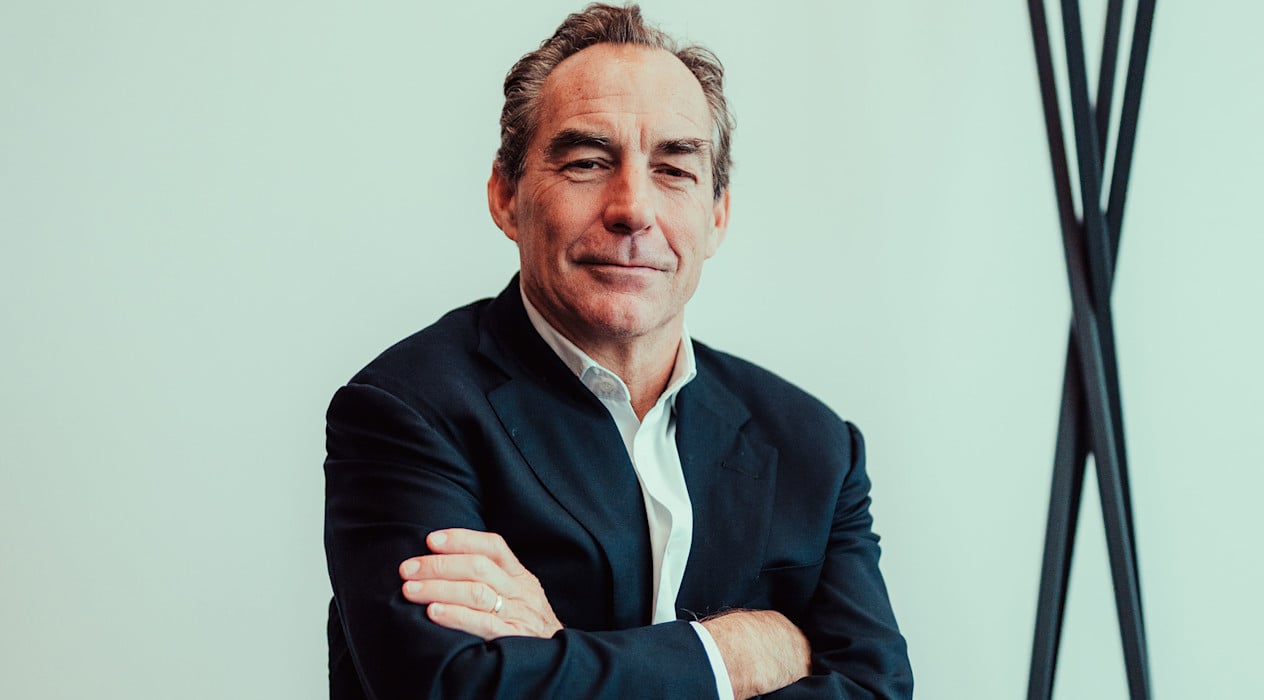
After decades of doing it one way, recent tectonic shifts in the way Formula One organises its business model have triggered significant growth and increased awareness of the sport. Jefferson Slack, Managing Director, Commercial and Marketing at Aston Martin Aramco Formula One Team believes this is a key ingredient in the evolution of the team.
"The growth of Formula One is truly staggering. A decade ago, teams were being bought with a nominal price tag of one dollar. They're now valued in billions. With Liberty Media running the sport, there has been a tectonic shift in how Formula One operates. There's a cost cap in place to begin levelling the playing field; the sport has cracked the US market; and there is more engagement with fans. As a confident global business and franchise model, the last few years have been transformational.
"Not all F1 teams have the same motivations. There are teams owned by vast corporate concerns and others that are viewed purely as a marketing platform by their owners. That's not Aston Martin Aramco Formula One Team. Lawrence Stroll, our Executive chairman and majority owner, is a wealthy individual – but he is an individual, and our competition includes some mighty corporate giants.
"While we promote the Aston Martin automotive brand – and do a great job of it – we don't have a corporate fund we can just dip into. In a very positive way, that means Aston Martin Aramco relies on having a busy and dynamic commercial and marketing operation, perhaps more so than is the case elsewhere. That's exciting: it makes us feel the racing team needs us. It also makes us ambitious: we're competing against the best teams in the world with decades of history in this sport. It brings some pressure, but where else would we have the opportunity to achieve something like this?
"When I first met Lawrence through a mutual friend, I didn't know much about the sport – my motorsport experience extended only as far as two wheels from my time spent as commercial advisor to MotoGP promoter Dorna – but Lawrence's vision for the team was clear. Crucially, he knew the commercial potential of bringing Aston Martin back to Formula One, and I've relished the chance to join him on this journey.
"I'm a huge sports fan first and foremost, and while I may have hung up my helmet after a stint spent cycling competitively many years ago, I'm still every bit as hungry to succeed at everything I do. In more than 30 years of sports marketing, I've had the privilege of working with some of the biggest names in sport: from representing renowned athletes, including Michael Jordan and David Beckham, to delivering high-profile football partnerships and marketing deals in my time with leading agencies Wasserman and IMG. Yet few commercial opportunities I've been involved in have had quite the same allure as the challenge at Aston Martin.

Formula One has embraced a US sports model
"Liberty Media knows what it's doing and it's doing a great job running F1. It introduced a budget cap, delivered the US market, increased the calendar to 24 races and guided the sport through the pandemic. It's done a very good job of following a US league model. Those US leagues are the best-run sports businesses in the world, not just in an economic sense but also from a fan standpoint.
"US sports are the benchmark when it comes to making sport a global entertainment product and turning it into a business. The NBA, for example, always had to work harder than other leagues because basketball wasn't as big as other sports like baseball or football and that's where I really learned the business of sports when I worked with Michael Jordan in the 1990s.
"What teams and sports are doing in the US is always a source of inspiration and I'm constantly telling our commercial team to look at what they're doing. It was the same when I was CEO of Inter Milan in the early noughties, becoming the first American to run a top European soccer team: I was applying American sports business practices to soccer.
"For decades, US sports have worked hard to understand what fans want and how better to engage with them. They provide better access, better content and different ways to consume it. They invest for the long-term and this, traditionally, hasn't been done in international sports: it's not money people want to spend because there isn't an immediate pay-off.
"Within the fan community, I can understand how purists may be upset by the way the mix between classic circuits and new venues has changed in the modern F1 calendar, but in terms of the business model, I think everyone should be happy. The structural changes Liberty has engineered are making the sport stronger. Teams are no longer at risk of bankruptcy and the cost cap makes the field more competitive. Last year, we had a team at the top, clear of everyone else, which isn't great, but the battle between the next four teams including Aston Martin Aramco was exceptionally tight, which bodes well for the future.

A dynasty, not a fashion statement
"There is work to do. The transformation isn't complete and there are still traces of the old-school getting in the way – content availability, for example, is still an issue. This is a real challenge for F1. The sport needs to make sure it keeps engaging with fans. It can't concentrate on the high net-worth individuals going into the Paddock Club. It needs to engage across the whole socio-economic spectrum and some of the current content policies were just not designed for a world with social media at its heart.
"This doesn't aid building the fanbase. The sport has gathered momentum, but now it has to sustain and retain the new fans it has attracted – particularly the younger fans. We can't let F1 become a passing fashion: it's hot right now, but next year it might be wrestling or padel. You have to work to keep those fans because they have plenty of choice.
"We're doing some things differently here to further engage and grow our fanbase: our TikTok partnership and our I / AM fan engagement programme to name two, and we're driving the fastest growing fanbase in the sport. But of course, we always want more.
Easy to build from humble origins
"At Aston Martin Aramco, we are fortunate to be building from a very modest base. Our predecessors were small, and this has allowed us to construct a modern organisation without running into legacy issues. F1 has some huge teams and undoubtedly, had they gone through the changes we've been through, they would struggle to adapt, both culturally and structurally.
"We started with the smallest fanbase of any team, and now we have the fifth-largest. It isn't because we've won the World Championship – we haven't won anything yet – but from having the right brand coupled with the right strategy. Economically, the organisation has grown to eight times the size of the one we inherited. I'm not aware of anyone growing that quickly in any team sport. It doesn't mean we're there yet – but the growth has been extraordinary.
"Some of that is down to circumstance – and it's important to acknowledge not everything is the result of following a strategy. The pandemic forced F1 to accelerate its technological prowess in making the sport more accessible to fans at home, while Drive to Survive generated huge interest for the sport in the US market at just the right time. As a team intent on growth, those improvements in accessibility and popularity helped us disproportionately.
It's important that everyone understands they're going to be applauded rather than criticised for trying good things that don't work.
F1 is a big target for smart money
"As a sports business, Formula One has a lot going for it. More than I originally realised in 2020 when I joined, certainly more than most other international sports. Being a coherent series is a big plus point. Other global sports like tennis and golf have their majors, but they don't enjoy the same drama that comes from having a defined season that crowns World Champions at the end. Equally, we don't carry the enormous overheads of a Premier League football club, with a large and expensive first-team squad.
"Many of F1's partners are businesses not traditionally involved in sports marketing. They come to F1 because there is an authentic partnership to be had, and marketing with authenticity is the gold standard. This is particularly true for technology companies. There are real stories to be told because no sport in the world embraces technology like F1.
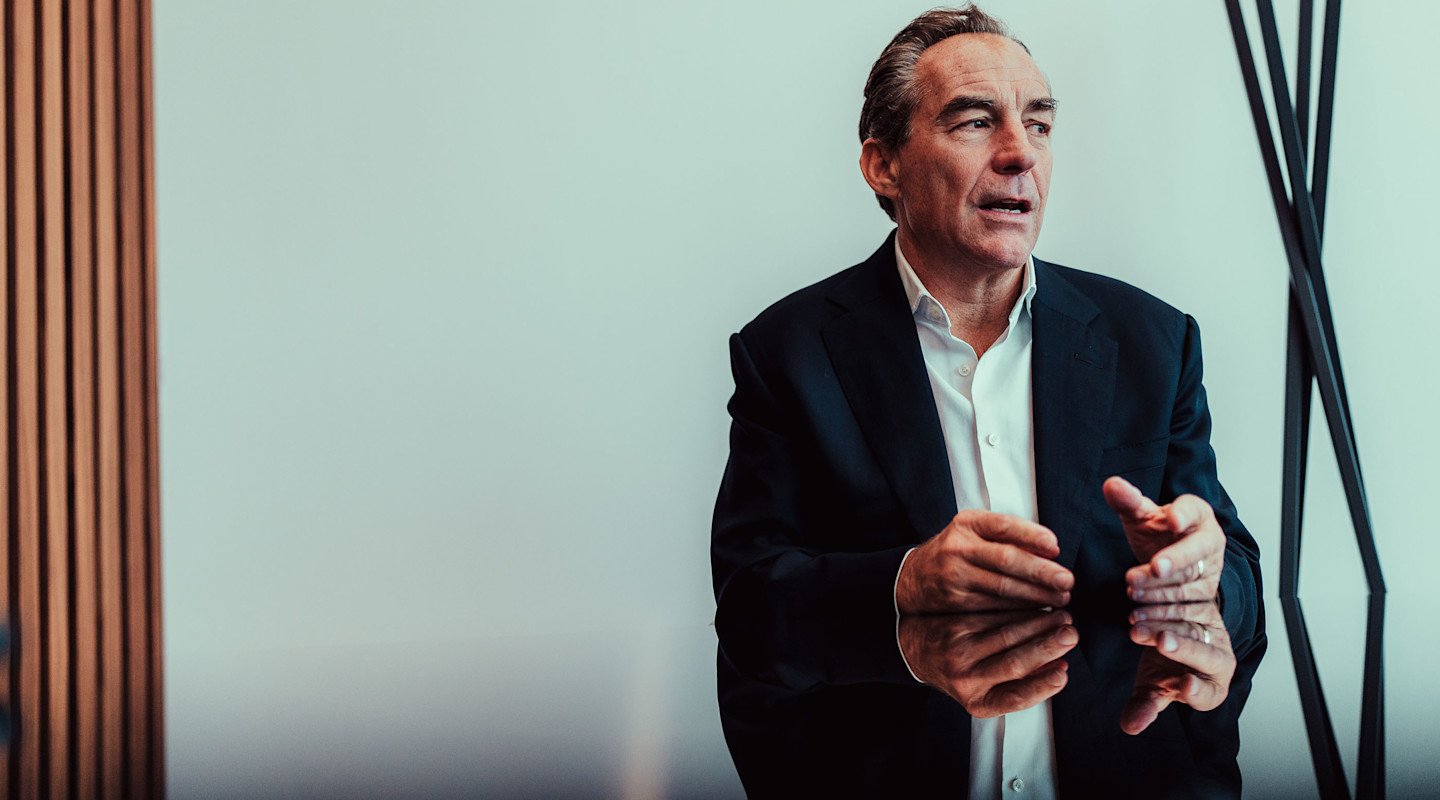
"Our partners help us go faster: we need their high-end, cutting-edge technology to win. For instance, Aramco is our new title partner. The petrochemical industry is a fundamental part of F1, and with our transition to advanced fuels for 2026, there's an authentic alignment between their expertise and our requirements as F1 moves towards a net-zero target for 2030.
"These natural partnerships are perhaps why F1 has been developing its B2B offering but partners aren't with us as a charitable exercise or from a deep-seated love of motorsport – although the latter is often evident. They do it because they achieve a business objective; it puts the focus firmly on C-suite executives making decisions about big expenditures.
"In terms of attracting partners to our team, the Aston Martin name has real appeal. Lawrence could have continued with the Racing Point name or something similar, but there's real genius in tying our racing organisation into a car maker with more than 110 years of heritage. Ourselves and Ferrari are the two brands in the F1 paddock with long-term, ultra-luxury heritage, and that holds an appeal for many potential partners.
A commercial team hyper-focused on clear objectives
"It's an amazing feeling when we bring a new partner on board because making that connection is hard. The team should enjoy those moments – because they don't happen all that often – but at the same time, we have to realise that it's the start of a relationship, not the culmination. We have to build it, embed ourselves with our partner and continually demonstrate that we are delivering value.
"To get that done, we're no different from the race team in the way we like to create an empowered environment and give our people responsibility. It's important that everyone understands they're going to be applauded rather than criticised for trying good things that don't work – because a lot of things don't work but are often worth trying. We felt very good about NFTs, for example. There are no negative ramifications for trying to make something good happen.
"Beyond that, for me, it's about setting out clear objectives. We drive top-line revenue and create a culture and team of people that can do that – that can build shareholder value. The notion of an F1 team making a profit is still sometimes viewed in a negative light and it shouldn't be. The NFL has perhaps the best business model of any sport and all the team owners make money from it – and some of them make a lot of money. It doesn't detract from the product. If anything, the opposite is true: it gives you the ability to think long-term and build a product that works, a product that people want to continue to come back to. It's a virtuous circle."
Amplify your fan experience
From exclusive collabs to once-in-a-lifetime prizes, I / AM DROPS is a new series of unique and ultra-limited moments and fan experiences.
Sign up for I / AM or sign in to unlock.





